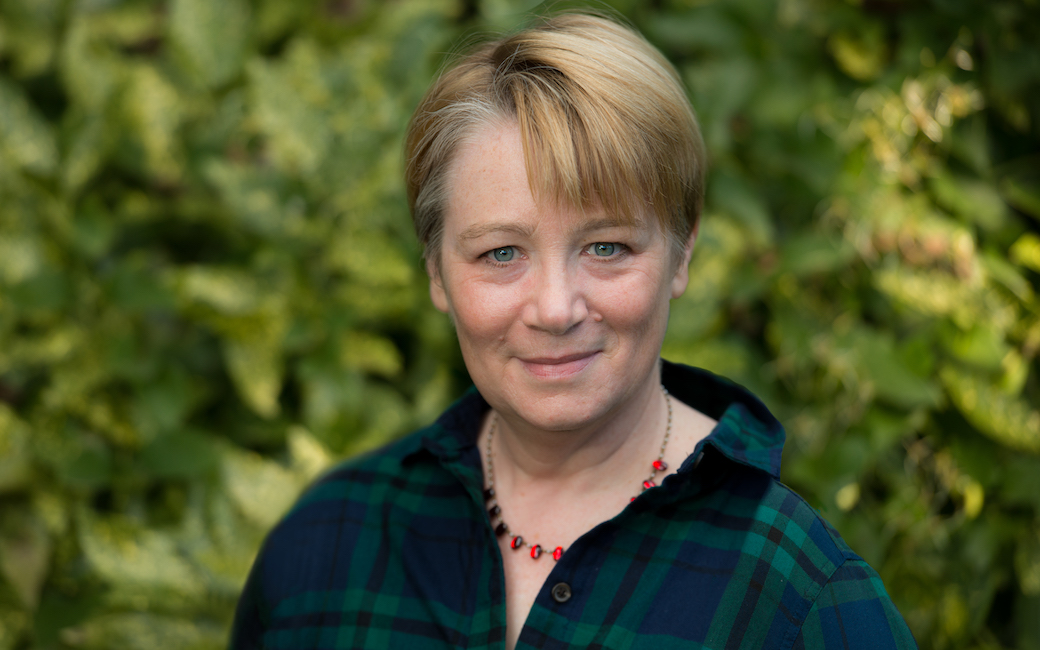Poetry in the time of COVID-19
National Book Award finalist, TU professor recommends poetry selections for unique time in history
By Leslie Harrison on April 25, 2020

If you’ve been isolating for the last few weeks, you probably don’t know what day of the week it is much less that April is National Poetry Month. If you’ve made sourdough, watched Tiger King three times and scrolled to the end of the Internet, National Book Award finalist and Towson University professor Leslie Harrison has 11 poems to get you through.
We’ve never had an April like this one. Sure, the country and the world have survived pandemics before, but not in precisely this way; not in our modern, busy, profoundly connected world; and not in most of our lifetimes.
Poetry is the way I encounter the world, the way I try to make things make sense or at least make beauty. And so in this strange, sad, difficult time, I turn to poetry for both explanation and solace, messages in the bottles of history washed up on our shores with some things to tell us, some things to comfort us.
This is, I will grant, a strange list composed as it is of poems of both comfort and devastation. Choose those that speak to you. Or find others that do. Poems reward the kind of slowing down that has happened to most of us. I told my students that poems are not easy. They play a little hard to get because—like all the people you love—they’re complicated while often seeming simple or simple while seeming complicated. Anyway, here are some poems for not just any April but this April.
- Emily Dickinson, Poem #314
I begin with the original social distancer, Emily Dickinson, who, toward the end of her life, would only speak to visitors through a door left barely ajar. She lived her whole adult life in the same room, rarely left the grounds of her house and refused most visitors. Our social distancing would have been her everyday world.
- Gerard Manley Hopkins, Pied Beauty
Gerard Manley Hopkins, back in the day (this poem was written in 1877), wrote some of the best-sounding poems in the English language. This one is a shortened version of a sonnet, and it is a little song of praise for things not often praised in poems. It sounds so amazing, and, as spring brings its usual beauties into our yards and streets, it is good to find beauty in small, overlooked places.
- Adam Zagajewski, translated by Clare Cavanagh, Try to Praise the Mutilated World
Adam Zagajewski is a Polish poet who has lived and taught in the U.S. for decades but who prefers to write in his own language. This is his most famous poem, translated by Clare Cavanagh.
- Maggie Smith, Good Bones and At the End of My Marriage, I Think of Something My Daughter Said About Trees
Maggie Smith is a young poet based in Ohio. She gets two nods here. The first is a poem that went viral, which, for poets is kind of miraculous. In it she walks the tightrope between hope and reality, between unvarnished truth and beauty. It’s a tightrope so many of us are on right now.
The second of her poems is another way to think about change, especially change we assume is bad.
- Ilya Kaminsky, Author’s Prayer
Ukrainian Ilya Kaminsky is another young poet and refugee. Born in Odessa when it was part of the U.S.S.R., Kaminsky is also deaf. This is from his first book, Dancing in Odessa.
- Elizabeth Bishop, Sestina [PDF]
A sestina is a kind of poem that repeats the same six words at the end of lines through seven stanzas in a kind of spiral pattern. This is a strangely sad domestic poem of her childhood.
Sometimes we need to put a face on a tragedy, and so Dylan Thomas imagines the losses in London during WWII as the loss of one child. While what is happening right now seems, and is, huge, it isn’t the only global tragedy humanity has endured, and we got through all the others.
- William Wordsworth, [I wandered lonely as a Cloud]
Because it is spring, and this is about social distancing—he’s alone on a walk, and then he is remembering being alone on a walk while being alone at his home.
- e.e. Cummings., [if up’s the word]
e.e. Cummings was the most playful, joyous poet at times. And he didn’t care so much for normal punctuation and such, but his poems are always fun to read. This is one of my favorites—about spring and togetherness.
- Nomi Stone, Waiting for Happiness
And I cannot escape National Poetry Month without a poem full of a dog, full of the relationship between humans and dogs, full of waiting and full of happiness.
Need some new reading material?
Get a BCPL virtual library card
If you’d like to check out some of these selections or you’ve simply run out of your own books to read, the Baltimore County Public Library has you covered. If you don’t already have a library card, register online for a virtual one and gain access to the system’s digital materials and online research databases.